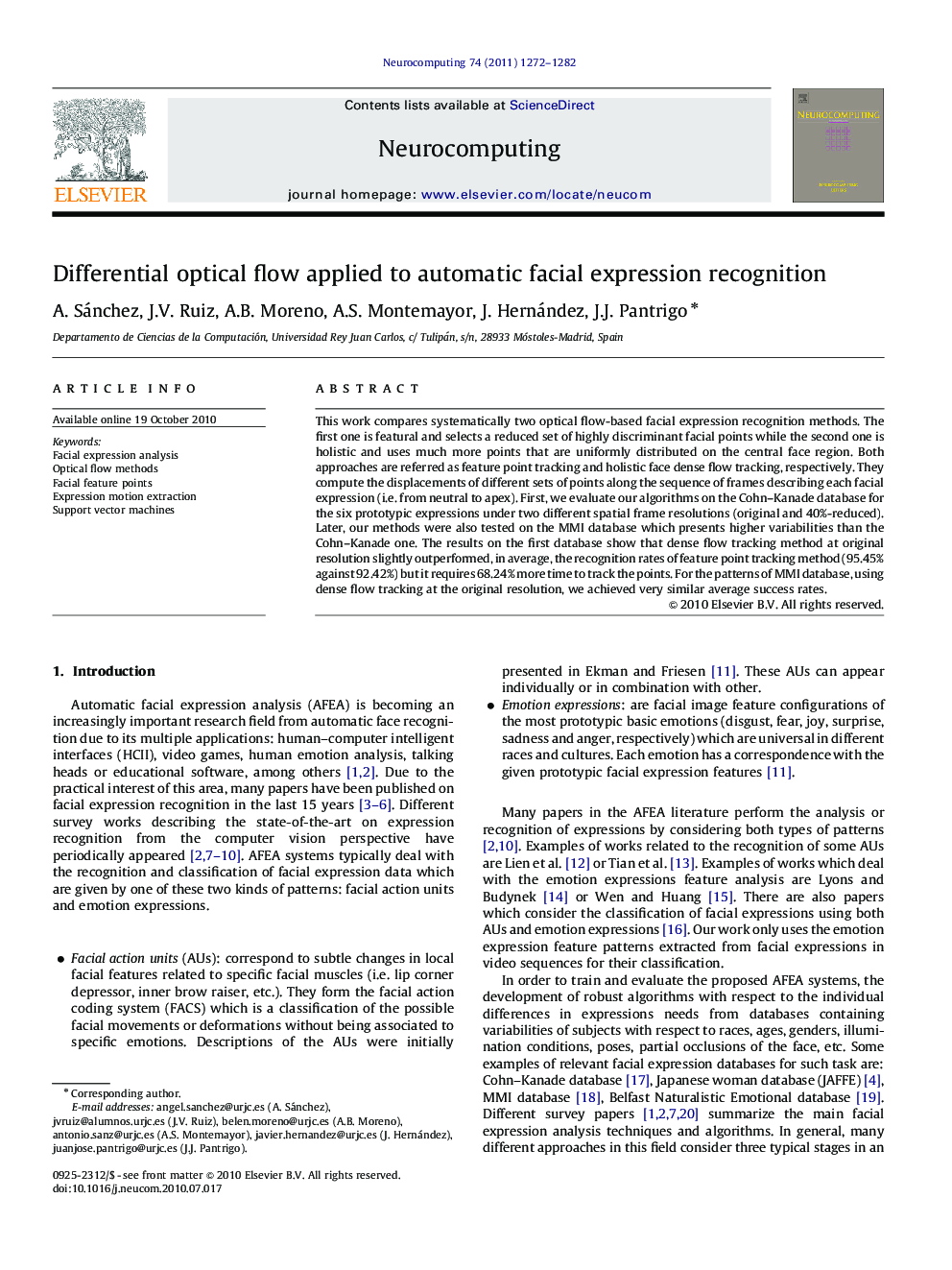| Article ID | Journal | Published Year | Pages | File Type |
|---|---|---|---|---|
| 408341 | Neurocomputing | 2011 | 11 Pages |
This work compares systematically two optical flow-based facial expression recognition methods. The first one is featural and selects a reduced set of highly discriminant facial points while the second one is holistic and uses much more points that are uniformly distributed on the central face region. Both approaches are referred as feature point tracking and holistic face dense flow tracking, respectively. They compute the displacements of different sets of points along the sequence of frames describing each facial expression (i.e. from neutral to apex). First, we evaluate our algorithms on the Cohn–Kanade database for the six prototypic expressions under two different spatial frame resolutions (original and 40%-reduced). Later, our methods were also tested on the MMI database which presents higher variabilities than the Cohn–Kanade one. The results on the first database show that dense flow tracking method at original resolution slightly outperformed, in average, the recognition rates of feature point tracking method (95.45% against 92.42%) but it requires 68.24% more time to track the points. For the patterns of MMI database, using dense flow tracking at the original resolution, we achieved very similar average success rates.
